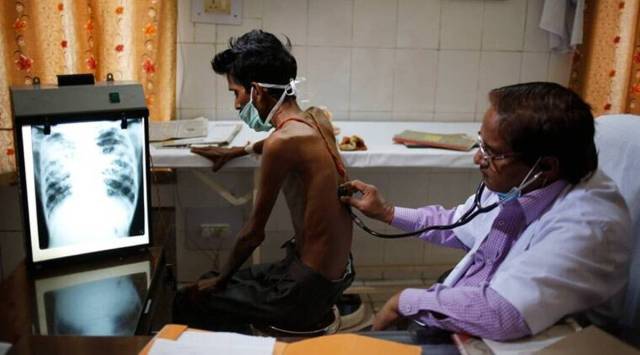The Covid-19 pandemic acted as a catalyst for the proliferation of battery-operated, portable TrueNat PCR machines that can better detect tuberculosis (TB), aiding the country’s programme to eliminate the bacterial disease by 2025. These machines capable of testing for Covid-19 as well have already been deployed to 2,200 healthcare facilities across the country as the country observes World Tuberculosis Day today (March 24).
The government is now in the process of making molecular diagnosis the first-line test for TB, ensuring more cases get diagnosed.

🗞️ Subscribe Now: Get Express Premium to access the best Election reporting and analysis 🗞️
Story continues below this ad
India reported 18.05 lakh TB cases in 2020, which was 24% less than the previous year owing to measures such as lockdown during the pandemic.
“There are a total of 5,000 machines across India right now, including those under the government programme and private sector. This is just a platform technology to bring PCR testing to the lowest level of healthcare. This is probably the most disruptive innovation that has happened in the TB programme over the last 20 years,” said Sriram Natarajan, director, Molbio Diagnostics, which has developed the testing platform, that along with TB and Covid-19 is also capable of diagnosing conditions such as HIV, Hepatitis B and C, Human Papillomavirus (HPV) which is known to increase the risk of cervical cancer, and H1N1.
The TrueNat technology, like any other PCR technology, amplifies the genetic material of a pathogen to identify. Microscopy for TB, on the other hand, just identifies the pathogen by seeing in through the microscope, making it less accurate. In fact, microscopy is known to detect only 40 per cent of the TB cases as compared to 98 per cent using TrueNat.
All the reagents used in TrueNat testing are available in a cartridge that goes in the machine, meaning highly-skilled lab technicians are not needed to do the test. It also does not require a proper laboratory and the test can be done on the field. It is battery operated and can use data from a SIM card to also upload the information of positive TB patients directly to the government portal, making it useful in low resource settings such as primary and community health centres.
Story continues below this ad
“The government is in the process of making molecular diagnosis the first-line test for TB, so that cases do not get missed and the spread does not continue. TrueNat is extremely essential for that as it can give results on whether a person has TB and whether it is drug-resistant or not within two hours. Right now the samples have to be sent to district-level hospitals for molecular testing, which can take up to a week or more to put people on the right treatment. Additionally, the quick test can help in active case finding; right now only those who have symptoms come to the government system to get tested,” said Natarajan.
There are around 14,000 microscopy centres under the national TB programme, with the government planning to replace it with TrueNat testing in at least 7,000-8,000 centres.
In addition to the government programmes, Molbio Diagnostics has also developed a TB screening van that can screen people using a quick x-ray and then use the molecular testing to confirm the diagnosis in those who are found to be positive. “This is an end to end solution and it will be needed for active case finding as India moves towards elimination,” he said.
He said, the pandemic has set back the programmes by years and aggressive action is needed over the next three years if India hopes to achieve its target of TB elimination by 2025. “The programme will have to aggressively screen patients to find and treat as many cases as possible to ensure that it is not further spread in the community. Plus the government will also have to look at not just diagnosing but also the treatment for latent TB — 40 per cent of cases have no symptoms — that acts as a pool for transmission,” said Natarajan.









